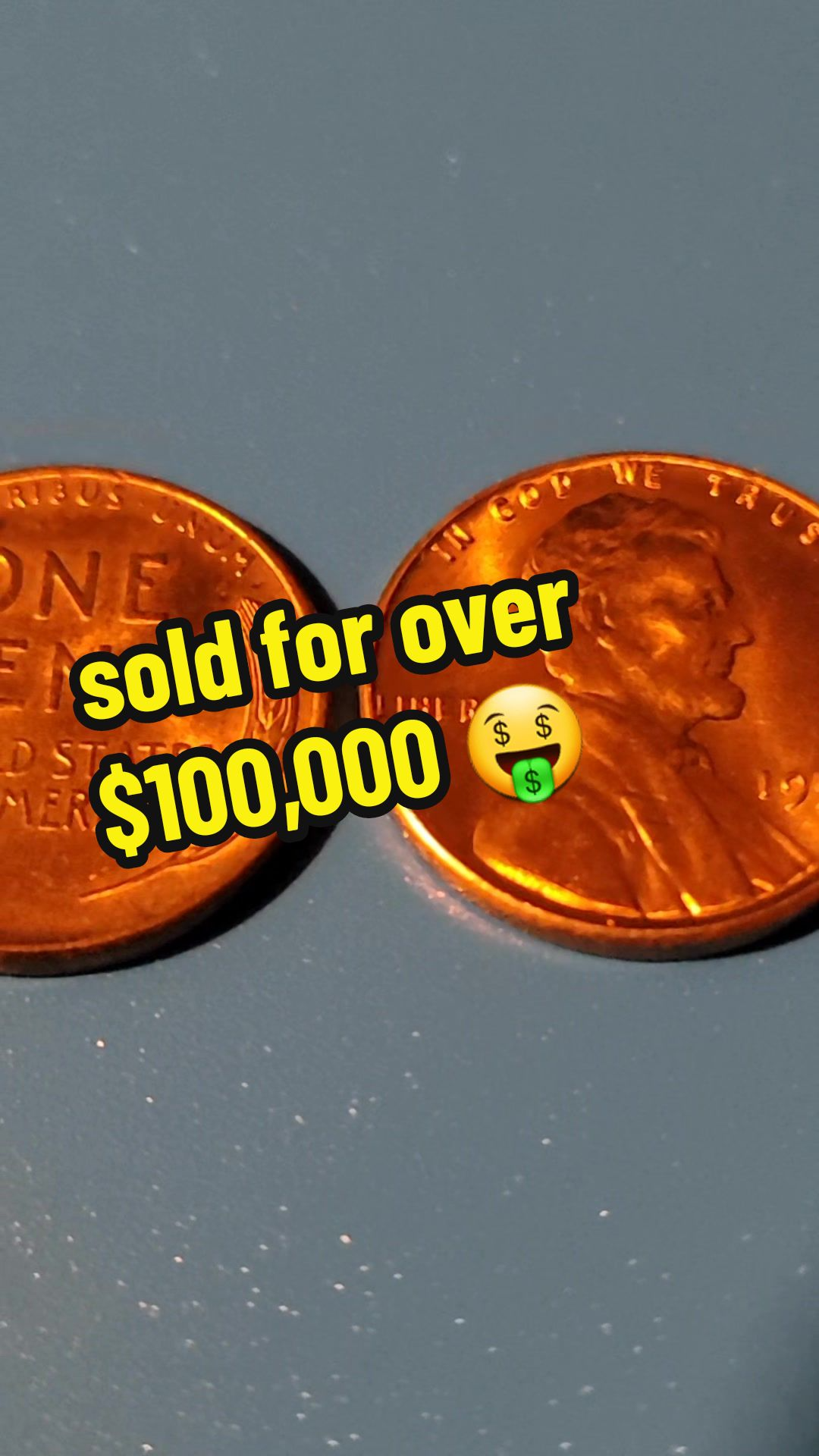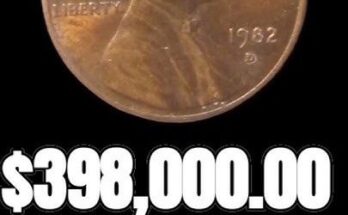
Worth $450–$1,000+
🛑 Wait! Don’t toss that 1922 penny. Some 1922 cents—especially the famous “No D” (missing Denver mint mark) varieties—regularly sell for hundreds and, in high-grade or rare die-pair forms, for thousands. This HitMag-friendly guide shows you, step-by-step, how to spot one, protect it, and turn a small find into real money. ✨
🔎 Quick: Why the 1922 “No D” Is Valuable
- In 1922, most Lincoln cents were struck at the Denver Mint (D).
- Some pieces were struck from worn or relapped dies that produced no visible “D” — these are the sought-after “No D” (aka Plain) variety.
- Value depends on variety (Strong vs Weak reverse), grade, and eye appeal. Certified examples are what drive the big prices.
💸 Real-World Prices (What You Can Expect)
- Common raw “No D” (circulated): $300–$900 (online marketplace range)
- Certified mid-grade: $500–$2,000+ (depends on Strong-Reverse attribution and eye appeal)
- High-grade / auction pieces: Several thousand — notable auction sales have reached the mid four-figures (e.g., a pleasing AU example sold for ~$9,600 at Heritage).
Bottom line: most finds are hundreds of dollars; a correct attribution + grading can push value into four or five figures. 💎
✅ How to Spot a 1922 “No D” — Step-by-step (3–5 minutes)
Step 1 — Locate the Date & Mintmark area
Look just below the date on the obverse (Lincoln’s bust). A Denver “D” should normally appear there.
Step 2 — Is the “D” missing or extremely faint?
- If no D is visible, pause. This could be a real “No D” variety — or a weak strike / wear / tampering.
- Use a 10× loupe and good light.
Step 3 — Strong vs Weak Reverse check
- Strong-Reverse examples (bold reverse details) paired with no D are the most valuable.
- A worn obverse with a bold reverse is a classic sign of a true die variety (not simply wear). ✔
Step 4 — Look for signs of tampering
- Check for tooling marks, uneven surfaces, glue, or scraping around the mintmark area — these indicate alteration.
- If you spot tooling, treat the coin as suspect.
Step 5 — Compare with reference images
- Compare your photos to PCGS/NGC images and die-attribution guides (these show Strong/Weak reverse patterns).
- If it matches a known “No D” die-pair, you’re on to something.
⚠️ Common Pitfalls — Don’t Get Tricked
- Weak strike vs true No-D: Some 1922s have weak Ds from worn dies — not all weak/missing Ds equal the collectible “No D, Strong Reverse” variety.
- Altered coins: Some sellers remove Ds or pass off cleaned/altered coins. Always be suspicious of “too good to be true” listings.
- Photos only aren’t enough: High-res images help, but physical grading or expert attribution is usually required to unlock top prices.
🧾 If You Think You Found a “No D” — Exact Next Steps
- Do not clean the coin. Cleaning destroys value.
- Handle by the edges or wear cotton gloves.
- Photograph: Obverse, reverse, and a tight close-up of the mintmark area (good lighting + macro). 📸
- Compare with PCGS/NGC reference photos and die-pair charts.
- Get professional attribution/grading: Submit to PCGS or NGC (or request a trusted third-party attribution first). Certification often multiplies a $5 find into a $500–$1,000+ sale.
- Sell smart: High-end examples do best at major auctions (Heritage, Stack’s Bowers); lower-grade certified pieces sell well on reputable marketplaces and dealer networks.
🧰 Tools & Quick Checklist (printable)
- 10× loupe 🔍
- Good LED light 💡
- Smartphone with macro camera 📱
- Reference access: PCGS / NGC images and die-pair charts
- Protective 2×2 or coin flip for temporary storage
💬 Quick FAQ (mobile-friendly)
Q: Is every 1922 with no visible “D” valuable?
A: No. Only certain die varieties and attractive coins are worth collecting—professional attribution is essential.
Q: Should I grade my coin?
A: Yes — grading and attribution by PCGS/NGC typically add substantial value.
Q: Can I spot fakes myself?
A: You can screen for obvious tampering, but always seek expert authentication for anything you expect to be valuable.
📚 Sources & Further Reading (for serious collectors)
- PCGS CoinFacts — 1922 & 1922-D variety pages
- NGC Collector Guides — 1922 Lincoln cent notes
- Coin World — auction sale coverage and market reports
- Lincoln cent specialist sites and die-pair references



Leave a Reply